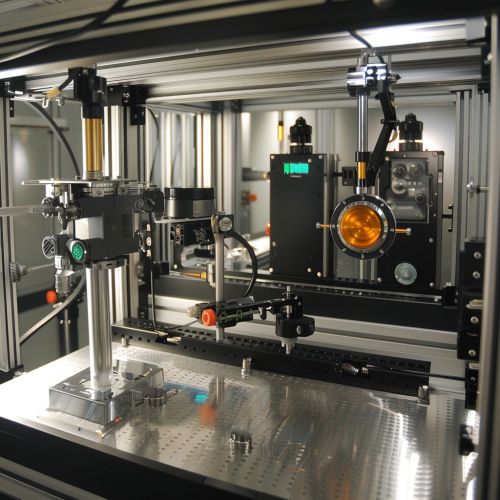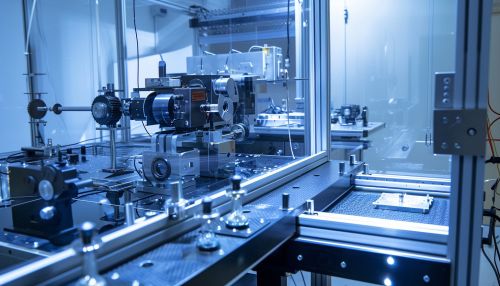Fourier Transform Spectroscopy
Introduction
Fourier Transform Spectroscopy (FTS) is a measurement technique whereby spectra are collected based on measurements of the coherence of a radiative source, using time-domain or space-domain measurements of the electromagnetic radiation or other types of waves. This method is widely used in various fields such as chemistry, physics, and astronomy for the analysis of the spectral properties of light and other types of electromagnetic radiation.
Principles of Fourier Transform Spectroscopy
FTS relies on the mathematical concept of the Fourier transform, which decomposes a function (often a signal) into its constituent frequencies. The basic principle involves measuring the interference pattern of the radiation as a function of time or space, and then applying the Fourier transform to convert this data into a spectrum.
Interferometry
The core component of an FTS system is an interferometer, typically a Michelson interferometer. The interferometer splits a beam of light into two paths, reflects them back, and recombines them to create an interference pattern. The resulting interferogram contains information about the spectral content of the light source.


Mathematical Foundation
The mathematical foundation of FTS is rooted in the Fourier transform. For a given time-domain signal \( I(t) \), the Fourier transform \( \mathcal{F}(I(t)) \) is given by: \[ \mathcal{F}(I(t)) = \int_{-\infty}^{\infty} I(t) e^{-i \omega t} \, dt \] where \( \omega \) is the angular frequency. This transform converts the time-domain signal into a frequency-domain spectrum.
Instrumentation
FTS instruments are designed to measure the interference pattern of light and convert it into a spectrum. The main components include a light source, an interferometer, a detector, and a data processing unit.
Light Source
The light source in FTS can vary depending on the application. Common sources include lasers, thermal emitters, and synchrotron radiation. The choice of source affects the spectral range and resolution of the measurement.
Interferometer
The interferometer is the heart of the FTS system. The Michelson interferometer is the most commonly used, but other types such as the Mach-Zehnder and Fabry-Pérot interferometers are also employed in specific applications.
Detector
Detectors in FTS systems must be sensitive to the wavelength range of interest. Common detectors include photodiodes, photomultiplier tubes, and charge-coupled devices (CCDs). The detector converts the interference pattern into an electrical signal that can be processed.
Data Processing
The data processing unit performs the Fourier transform on the collected interferogram to produce the spectrum. This involves digitizing the signal, applying the Fourier transform, and correcting for any instrumental effects.
Applications
FTS has a wide range of applications across various scientific disciplines.
Chemistry
In chemistry, FTS is used for infrared spectroscopy to identify molecular vibrations and chemical bonds. It provides detailed information about the molecular structure and composition of a sample.
Physics
In physics, FTS is used to study the spectral properties of light sources, including lasers and other coherent light sources. It is also used in the study of quantum mechanics and the behavior of particles at different energy levels.
Astronomy
In astronomy, FTS is used to analyze the light from stars and other celestial objects. It helps in determining the chemical composition, temperature, and velocity of these objects. FTS is also used in the study of cosmic microwave background radiation.
Advantages and Limitations
FTS offers several advantages over other spectroscopic techniques, but it also has some limitations.
Advantages
- **High Resolution**: FTS can achieve very high spectral resolution, making it suitable for detailed spectral analysis.
- **Broad Spectral Range**: FTS can cover a broad spectral range, from the ultraviolet to the far-infrared.
- **Multiplex Advantage**: FTS can measure all wavelengths simultaneously, leading to faster data acquisition.
Limitations
- **Complexity**: FTS systems are complex and require precise alignment and calibration.
- **Sensitivity to Noise**: FTS measurements can be sensitive to noise and require careful signal processing.
- **Cost**: High-resolution FTS systems can be expensive to build and maintain.
